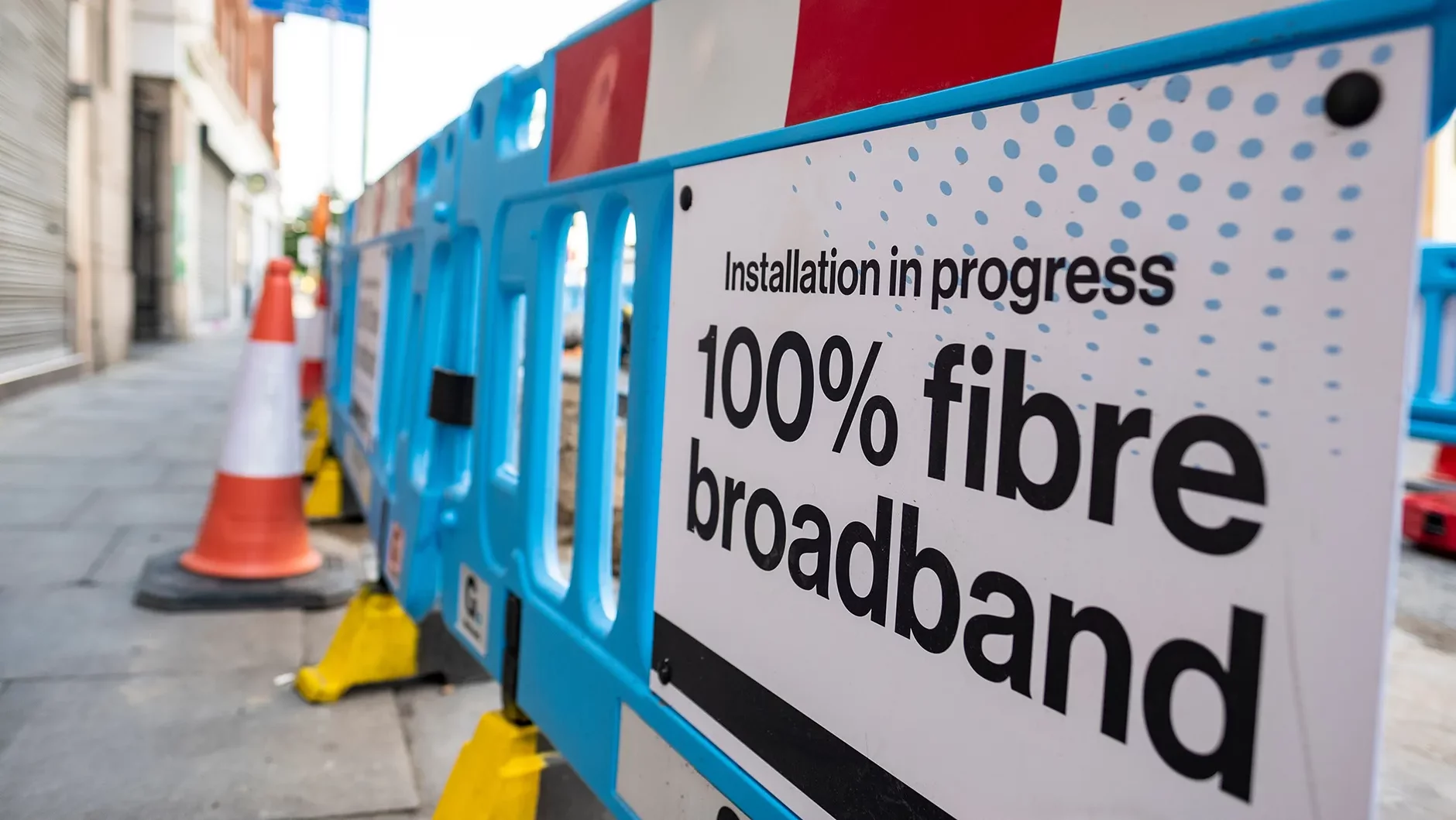EU Network Fees: Why the Term “Large Traffic Generators” Is So Problematic

An odd telecom industry term – “large traffic generators” – recently made it into the already lengthy list of EU tech jargon. Its use by the European Commission, however, is troublesome. Here’s why.
Last month, the Commission launched an “exploratory consultation” on the future of the telecom industry. Not often used, such an “exploratory consultation” is “preliminary in nature” and used to “determine if any problem exists” according to the better regulation toolbox. Problematically, the consultation adopts the loaded term “large traffic generators” (LTGs) and it seeks to identify which companies should be designated as LTGs based on criteria such as the amount of network data traffic over a certain threshold.
The framing echoes calls from telecom lobby groups such as GSMA that have demanded payments from “the companies generating the largest amounts of traffic,” also known as network usage fees. Readers might be left with an image of out-of-control traffic generators that spam data unsolicited, but let others (telcos) clean up their mess.
This misrepresentation has already been dismissed by the body of EU national telecom regulators (BEREC). It is telcos’ own customers who generate data traffic with their requests for online content and services of course.
Let me offer just two examples of widely-used online services – cloud computing and content delivery networks (CDNs) – to explain why BEREC is right and why it is so problematic that the Commission has adopted this LTG framing.
The power of cloud computing and CDNs
Cloud services use data centres to keep customers’ data safe and secure by storing it online, allowing users to access data when they want and from where they want. Everyone is familiar with “the cloud” of course, all the apps on our phones run on it after all.
The term CDNs, however, might be less well-known, even though we all benefit from them every day. They play an important role in delivering popular content such as websites, videos, music, and games to you. CDN providers temporarily store data in so-called caches. These caches are local servers spread all over the world, including within telecommunications networks, that store copies of files containing popular content as close as possible to end users, with the ultimate goal of reducing the cost and latency of delivery.
The larger CDN providers have invested in setting up thousands of servers around the globe, with a mix of large aggregated clusters at the edge of networks and small-footprint deployments deep inside telco networks. These CDNs help organisations to distribute their data as fast and efficiently as possible to end users. And just like cloud services, CDNs do not originate any content, nor do they generate any data traffic by themselves.
CDN providers actually often collaborate closely with telcos, e.g. by hooking up caches with popular content to local telecom networks, in order to help bring the data as close as possible to telcos’ customers, as well as planning connectivity for optimal traffic delivery.
Fundamentally flawed
Internet service providers (ISPs) can easily measure their own users’ requests for data and content, but they can’t identify which online services or websites are responding to data requests – and how much data is being sent back – because that traffic could be coming from a service or site that uses a cloud provider or CDN.
As a recent Plum study points out: “If a service is hosted on a cloud platform, the packets would carry the identity of the cloud platform, not the service. If a piece of content is served via a CDN, it would carry the identity of the CDN.” In other words, if a streaming platform uses a content delivery network to distribute its movies to paying subscribers, like most do, the traffic would be labelled as coming from the CDN, not the streamer. Hence, potential network fees would disproportionately target those cloud platforms and CDNs.
As an example, let’s consider any major news organisation. Their website is likely using a CDN so it can better handle large traffic volumes. When a consumer wants to browse the latest news on such a website, the data traffic request will go to the CDN that protects the site. The CDN will respond with the content of the website, and send that back to the consumer, via their telco. From the vantage point of the telco, they only see traffic coming back from the CDN, not the news website.
This means that in practice, telcos simply have no idea of the real share of traffic represented by organisations that use CDNs or cloud hosting. The only “percentage level of traffic” on their network that they can determine (which the Commission’s consultation asks ISPs to provide) is that of the cloud or CDN providers that act as facilitators.
Any content and application provider (CAP) – regardless of its size – relying on the cloud or CDNs would thus count towards a possible large-traffic-generator threshold, and also end up being charged for the network fees being imposed on the cloud or hosting provider they use. While telcos pretend that their plans only target large CAPs, the network fees they are after would in fact hurt a much wider range of players using digital services.
It’s not large CAPs that will take the biggest hit
Content and application providers that are just starting out will not build their own network infrastructure or data centres. They will use established cloud and CDN providers that have economies of scale and can quickly increase capacity if the CAP’s service turns out to be popular. The added value of a start-up CAP is innovative content, such as undiscovered arthouse gems or a cool new game, not building network infrastructure.
Even a popular home-grown European streamer like Spotify doesn’t operate its own infrastructure to host and distribute content. Their business model is providing customers with a vast music library, leaving the hosting and delivery of that content up to third parties.
But if cloud and CDN providers are forced to pay EU network usage fees, they will have to pass on those costs to any CAP whose services they host or deliver and count towards the earlier-mentioned threshold, including small and medium-sized ones.
As Analysys Mason underlines: “The implementation of network usage fees will increase barriers to entry for smaller CAPs. Larger CAPs have already built their own cloud or CDN infrastructure, and thus benefit from economies of scale. [For smaller CAPs,] network usage fee costs could be prohibitive for entering and offering services.”
Implications for broadcast media
More traditional sectors like broadcasting will be equally affected, even though telco lobby ETNO continues to claim that they are not after “start-ups, broadcasting companies or other cultural” players.
Now that viewers are increasingly switching from linear TV to streaming television programmes on-demand, nearly all broadcasters (including public ones) use the cloud and content delivery networks to make their content available to viewers, not only fiction but also the latest news broadcast. The BBC, for example, uses a third-party content delivery network to handle its streaming offer.
The British public broadcaster made the switch from operating its own data centre for content delivery in London to a global, shared CDN already back in 2007. But also new players in the converging TV and streaming markets that launch without offering linear programming at all, use cloud streaming services offered by the very “Big Tech” companies that telcos are after. Think of the popular F1TV streaming service exclusively dedicated to Formula One racing, for instance.
As German media association Vaunet told the European Commission: “If the [sending-party-network-pays] principle is introduced, media or broadcasting companies could also be obliged to make payments. A further increase in distribution costs would have a direct negative impact on investments in innovative contributions to the opinion forming process and media pluralism.”
The solution
Both the European Commission and telco lobbyists seem to entertain the idea that so-called “large traffic generators” need to be identified and forced to financially contribute to telco’s network investments. This simplistic thinking simply ignores how the internet works. Network traffic is generated by telcos’ own customers, who have already paid telecom operators for the delivery.
European organisations, of all sizes, increasingly use cloud and CDN services to better serve their own customers. Given that it is not possible to identify from which website, service, or platform traffic stems, all digital players would end up paying telcos through network fees.
The Commission’s consultation, and the use of loaded terms such as “large traffic generators,” imply that cloud and CDN services are part of a “problem”. In reality – by helping minimise traffic volumes, improve performance for telco customers, and protect websites and applications – clouds and CDNs are actually part of the solution.








